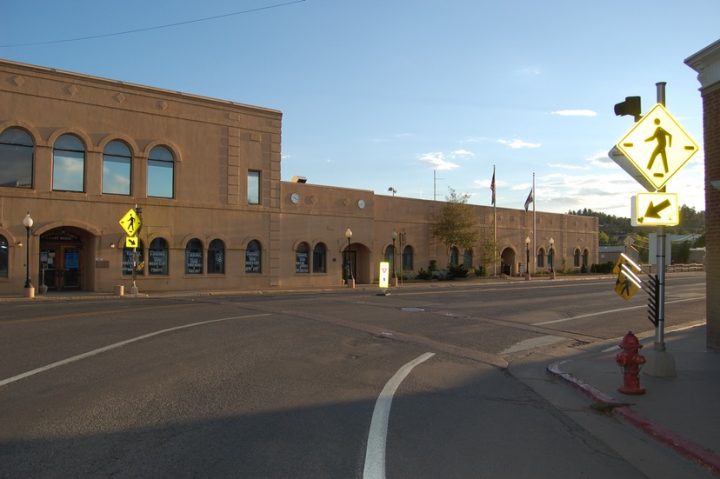I can hold the toy ship, and a little toy man! And look… with my tail, I can hold a red fan! I can fan with the fan as I hop on the ball! But that is not all… oh no, that is not all…
— from ‘The Cat in the Hat’ by Dr. Seuss.
We don’t always agree about how many things, and which things, our tax-funded governments should to attempt to undertake.
We understand — theoretically — that a significant segment of the Pagosa Springs population is struggling to make ends meet, and we all know that — theoretically — we don’t want to make things any worse for them.
The local millionaires, we’re not so worried about. They will be fine, presumably.
The current federal government, meanwhile, is either trying to make things better for America, or else make things better for American millionaires and billionaires. It’s hard to tell at the moment, although I’m sure we all have our opinions.
It’s also hard to tell what our Denver legislators are trying to do. Get rid of the TABOR amendment? That would raise practically everyone’s tax burden without needing voter approval, so it seems like an attractive option to some legislators.
This editorial series has been looking at the tax increases and capital projects proposed by our local governments. Looked at individually, each proposed project might seem reasonable to an elected government official who isn’t seriously paying attention to the big picture. But add them all up together, and we’re talking real money.
At the April 1 Archuleta Board of County Commissioners meeting, for example, County Manager Jack Harper noted that the commissioners have been talking — for months now — about getting the taxpaying public involved in planning the proposed administration building.
This building is necessary because a previous BOCC sold the historic County Courthouse for pennies on the dollar, without any kind of plan for relocating the County Clerk, the County Assessor and the County Treasurer, all currently housed in the old Courthouse.
The County Manager wanted to know what kind of public participation the commissioner have in mind? And when?
Commissioner John Ranson, who joined the BOCC in January, responded.
“I don’t have any real ideas other than, it would be nice to get some information. I know we’ve been talking about getting some very rough estimates and different sizes. Just a starting point, possibly, to have some type of information at a meeting…”
I agree with Commissioner Ranson. It’s difficult to have a meaningful discussion about anything, without information. Like, what will it cost? Where will the money come from? What kind of burden will it put on our struggling families? How big a building are we talking about?
At this point, we can only make wild guesses. Commissioner Ranson would like us to have at least some information about what a new building might look like, how big it might be, and it might cost.
Here’s a photo of the old County Courthouse.

The two-story portion on the left was built in 1928. The top floor of that half has been vacant ever since the Judicial District moved out back in 2016.
The bottom floor of the two-story portion accommodates the offices of the Clerk, the Assessor and the Treasurer. It’s cozy, but not exactly ‘overcrowded.’ The Clerk also occupies an Elections Office in the walk-out basement, facing the river.
By contrast, the right side of the building was built in 1991 to accommodate the County Sheriff and the County Detention Center, with a large parking garage below. It has been abandoned since 2015, for basically ridiculous reasons. But the abandonment gave a previous BOCC an excuse to spend tens of millions of dollars on a new jail, a new courthouse, and a new Sheriff’s office.
Now they are talking about a new County office building.
There are generally two ways the BOCC can finance a new office building.
One option is, they can redirect money away from other County needs — roads, public safety, maintenance, public health, elections, etc. — and use the money to pay off new Certificates of Participation. COPs. These are large government debts that the voters never approved. The BOCC gets a new building, and we get less services.
Or they can go to the voters and ask for a property tax increase to finance a bond issue. This option increases local taxes, but does not redirect County revenues away from roads, public safety, etc. We pay more taxes, but don’t necessarily see a reduced level of service.
Here’s that photo again, of the existing downtown courthouse.

This building measures about 25,000 square feet. But most of it is not occupied by the County. The “Elected Officials” — Clerk, Assessor and Treasurer — occupy only about 4,000 square feet. That leaves more than 20,000 square feet not occupied by the County government.
Here’s a spreadsheet published by the BOCC in 2015.

The “Elected Officials” occupied 3,870 square feet in the old Courthouse. But they “desired” more than twice that much space: 9,600 sq. ft.
After this spreadsheet was published, the BOCC bought a 4,000 square foot building for themselves on Lewis Street, thus doubling their floor space. (But not quite as much space as they “desired”?) Human Services also has a new building on Hot Springs Boulevard. Community Development has also expanded its available space.
The only County officials who “need” a new location, currently operate in about 4,000 square feet. As I said, it’s cozy. So maybe we want to build them a 10,000 square foot building?
No other County department “needs” to move into a new building. But the last time I heard the size of the proposed Administration Building, it was 50,000 square feet and it was being planned to accommodate numerous County departments that already have existing offices.
Let’s consider, again, the old Courthouse.
Half the building was built in 1928. Sixty years later, it got a 19,000 square foot addition.

Quite simply put, the County doesn’t “need” a 50,000 square foot building. They “need” a 10,000 square foot building, designed so additions can be added as the need arises. That’s how the house I live in was built. One addition at a time, as money allowed.
What are the chances that the current BOCC will embrace that kind of conservative approach to government? To build only what they need, when they actually need it?
If the voters understood that the BOCC wanted to be reasonable and put only the minimum burden on the taxpayers, would they be willing to increase their property taxes? Knowing that, in the past, when the voters didn’t approve the tax increase, the BOCC resorted to COPs and thus reduced the money available for County road maintenance and other services?
But that is not all… oh no, that is not all…

